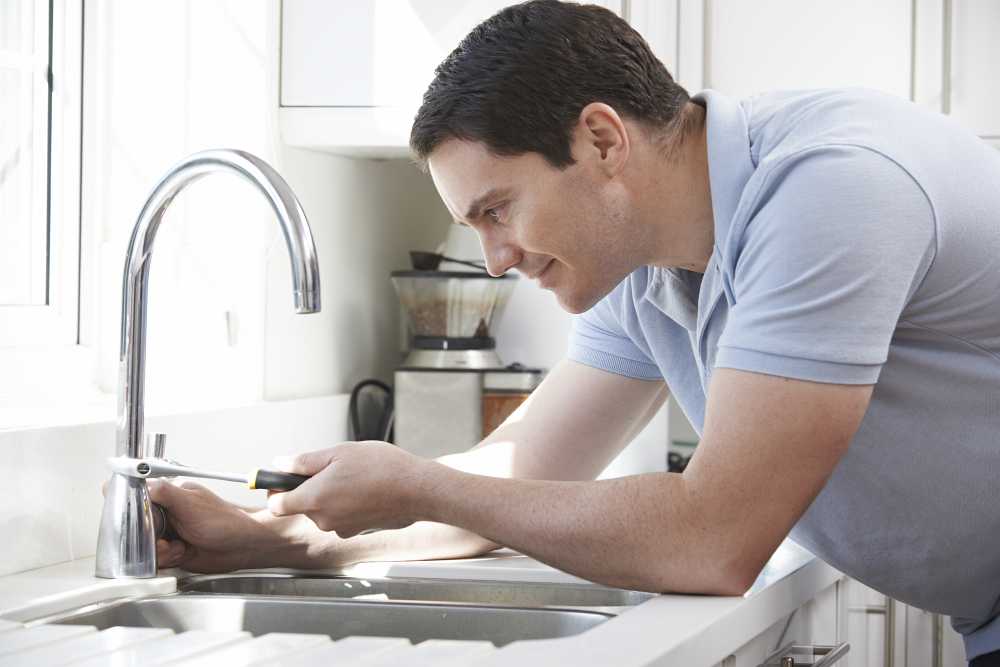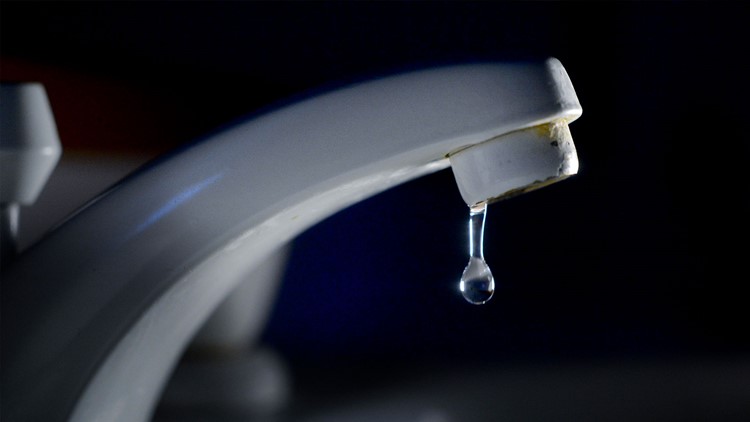Are you looking for answers on Here's How to Fix a Leaky Faucet?

Intro
A leaking faucet could seem like a minor nuisance, yet its repercussions expand much past the occasional drip. Comprehending the effects of a dripping faucet is important for both property owners and the environment. In this article, we'll check out the various effects of this typical household issue and why addressing it immediately is important.
Sources Of Leaky Faucets
Dripping faucets can result from a variety of factors, including damage, high water pressure, and rust. With time, the constant use taps can lead to worn-out seals and gaskets, causing leaks to establish. Additionally, too much water pressure can place strain on plumbing fixtures, causing leaks. Corrosion and corrosion can also deteriorate faucet components, making them vulnerable to leakage.
Water Wastage
Among one of the most significant effects of a dripping tap is water waste. Also a little drip can amount to gallons of wasted water over time. This not only increases water bills but likewise contributes to water deficiency and environmental deterioration. Dealing with leaking faucets without delay is critical for conserving this precious resource and lessening its impact on the planet.
Financial Influence
Along with drainage, dripping taps can likewise have a substantial economic impact. Enhanced water costs are a straight effect of water waste, costing property owners hundreds of bucks every year. Furthermore, the cost of fixing water damages caused by leakages can be considerable, especially if left neglected for a prolonged period.
Ecological Impact
The environmental effect of leaking faucets prolongs beyond water waste. By preserving water, house owners can add to broader efforts to mitigate water scarcity and secure natural ecological communities. Lasting alternatives such as rainwater harvesting and water-efficient fixtures can better reduce the environmental impact of household water use.
Technological Solutions
Improvements in modern technology have brought about the growth of smart taps and water-saving gadgets that help reduce water wastage. Smart taps make use of sensors to find movement and adjust water circulation accordingly, reducing waste without giving up ease. Water-saving devices such as aerators and low-flow showerheads are likewise effective in conserving water without compromising performance.
International Point of views
While leaking taps might look like a localized issue, they contribute to broader worldwide obstacles such as water shortage and climate adjustment. In areas already encountering water anxiety, every decline counts, making leak prevention and repair necessary. By taking on water-saving techniques and buying lasting technologies, property owners can play their component in resolving these pushing worldwide problems.
Governing Steps
Government laws play a crucial duty in minimizing the effect of leaking faucets and advertising water conservation. From building codes that call for water-efficient components to water-saving incentives and discounts, policymakers have a variety of devices at their disposal. By carrying out and enforcing these laws, governments can ensure that property owners prioritize water preservation in their daily lives.
Neighborhood Influence
Dealing with leaky taps requires collective efforts at the area degree. By raising recognition regarding the significance of water conservation and offering resources for leakage detection and repair, regional authorities can encourage house owners to do something about it. Campaigns such as water-saving discount programs and leakage discovery projects can incentivize behavior change and advertise responsible water use.
Instance Researches
Real-life instances of the effect of leaking faucets highlight the importance of proactive maintenance and timely repair services. From water damages to escalating water costs, the consequences of neglecting leaks can be severe. By sharing these case studies, homeowners can much better comprehend the relevance of dealing with leaking faucets without delay.
Educational Campaigns
Educational campaigns play an important function in increasing awareness concerning the results of leaking taps and promoting water preservation practices. Through workshops, workshops, and online sources, house owners can find out exactly how to detect and fix leakages themselves. By equipping individuals with knowledge and devices, academic projects can cultivate a culture of accountable water use within areas.
Health Problems
Leaky faucets can produce helpful environments for mold and mildew and mold development, posing health and wellness risks to residents. The visibility of mold and mildew can aggravate respiratory problems and allergic reactions, particularly in at risk people. Furthermore, water damage resulting from leaks can jeopardize the architectural integrity of structures and bring about expensive repair services.
DIY vs. Expert Repair work
When confronted with a leaking faucet, house owners commonly question whether to attempt repairs themselves or hire a specialist plumber. While do it yourself repair services can save money, they might not always deal with the underlying concern successfully. Expert plumbings have the knowledge and equipment to detect and take care of leaks properly, making sure long-lasting solutions and peace of mind for home owners.
Safety nets
Avoiding leaky taps needs routine maintenance and positive steps. Easy tasks such as changing worn-out washing machines and seals can protect against leaks from establishing. Furthermore, updating to top quality components and reducing water stress can help extend the life-span of faucets and decrease the risk of leakages.
Final thought
In conclusion, the impacts of a leaking faucet expand much past the periodic drip. From water waste and boosted water expenses to health and wellness concerns and ecological impact, the effects of overlooking leaks can be significant. By dealing with leaky faucets immediately and embracing water-saving practices, home owners can minimize these impacts and add to a much more sustainable future.
Why You Shouldn’t Ignore a Leaky Faucet in Your Home
What Causes a Leaky Faucet?
Various factors can cause a leak, from loose and worn-out parts to corrosion. Your faucet has four essential components from which most plumbing issues will stem: the O-ring, the valve seat, the washer and the gasket.
What Is an O-Ring?
The O-ring is a stem screw that fastens parts of the faucet in place, preventing water from leaking out of the spout. Depending on your faucet type, the stem might have multiple O-rings. Water will drip from the faucet’s handles and base if this part breaks or deteriorates.
What Is a Valve Seat?
The valve seat controls the flow and temperature of the water. Found at the base of the handle, it works as a seal for the faucet’s stem. The valve seat ensures the water is allowed to flow or is blocked as the handles dictate. You’ll know it’s malfunctioning when water leaks from your faucet’s sides.
What Is a Gasket?
The gasket is found between the water inlet and the valve stem. It creates a seal between the faucet and the sink, holding its joints by aerators attached to the stem’s head. Water will trickle out from the base if the gasket isn’t working.
What Is a Washer?
The washer secures the handles and prevents leakage, serving a similar purpose to the O-ring. While the O-ring is ordinarily round and made from an elastic material, such as rubber, the washer is square-shaped and composed of brass, copper and other hard metals. If it malfunctions, corrodes or has been improperly installed, water will leak out of the handles, causing that incessant faucet drip.
Why Is a Leaky Faucet Dangerous?
A leaky faucet left alone for too long can have significant consequences.
Pest Infestations
Since bugs and rodents gravitate towards the scent of water, a leaky faucet will draw pests to your sink. Both are looking for leaks accessible through crawl spaces, which a faucet provides. If you leave water dripping for too long, you run the risk of an infestation.
Rust
If one of the faucet parts has started to corrode, the resulting rust can spread to your pipes and valves with startling speed. The rust might even lead to cracks or other impairments, resulting in more severe plumbing issues.
Your sink could also sustain damage from a leaky faucet. The water in your tap possesses sparse elements of calcium and iron that can stain your sink with repeated and prolonged exposure. Once those elements in the water have been open to the air for some time, your sink will start to rust, creating marks that can be difficult to remove.
https://www.tomsmechanical.com/blog/why-you-shouldnt-ignore-a-leaky-faucet-in-your-home

I came across that content about How to Fix a Leaky Faucet when doing a lookup on the search engines. Those who liked our blog entry plz don't forget to pass it around. Many thanks for being here. Come back soon.